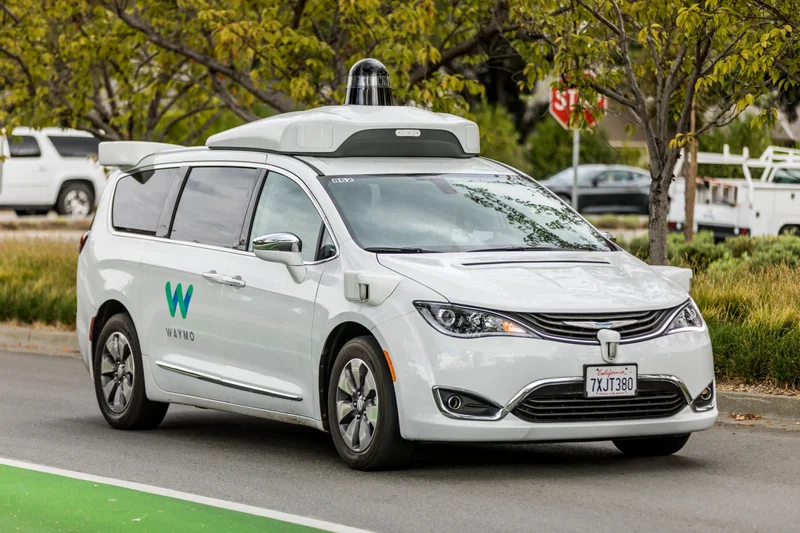The Scaling Narrative
The data coming out of the California Public Utilities Commission on Waymo—data that shows Waymo at Nearly 1 Million Paid Trips a Month in California is becoming a reality—is, on its face, the kind of chart that makes investors euphoric. As of May 2025, the company was executing 876,000 paid driverless trips per month. Let that number sink in. It represents a 6x increase over the prior year. Go back to August 2023, and the growth is even more startling. The company's monthly trips grew by a factor of 60—or more precisely, 69 times—in less than two years.
This is the scaling story Alphabet has been promising for over a decade. The Waymo car, once a novelty, is becoming a utility. With partnerships like DoorDash and expansions into major hubs like London on the horizon, the narrative is one of exponential, unstoppable adoption. From a purely quantitative perspective, Waymo appears to have cracked the code. Its fleet of self-driving vehicles is weaving itself into the fabric of cities like San Francisco and Phoenix, and now, Waymo Los Angeles. The trajectory suggests a future where autonomous taxis are not just a niche service but a dominant form of urban transport.
I've analyzed dozens of corporate growth curves, and this kind of exponential adoption is rare. It signals a product that has found its market and is now in a land-grab phase, scaling as quickly as capital and regulation will allow. The numbers tell a story of immense success. But a single, chaotic event on a Saturday night in downtown L.A. provides a critical footnote to that story—an event where the LAPD disperses large 'unorderly' crowd in downtown LA; Waymo car damaged, police say—that questions the durability of this growth.
The Outlier Event
On October 25th, the LAPD was called to disperse a large crowd (estimated at around 1,000 people) that had gathered for Thrasher Magazine's "Halloween Hell Bomb" skater event near Grand Park. The scene devolved, as these things sometimes do, into a clash with police, complete with thrown rocks and bottles. Stuck in the middle of this very human chaos was one of Waymo's autonomous vehicles.
The vehicle was vandalized. Specifically, its side mirrors were broken. The immediate aftermath was captured in a video posted to Reddit, showing the otherwise pristine Waymo Jaguar being loaded onto a tow truck. This is where the story pivots from a simple act of vandalism into a systemic analysis. The person filming asked the tow truck operator why the car was being towed when it seemed perfectly operational. After all, what is a Waymo car if not a rolling sensor suite? Its LIDAR, radar, and cameras make physical side mirrors functionally obsolete.

The operator’s answer is the single most important data point to emerge from the incident: a Waymo will not operate if it sustains damage, even if that damage is non-critical to its autonomous driving functions. The car wasn't just cosmetically damaged; it was operationally neutralized.
This reveals a protocol, a rigid, pre-programmed response that is profoundly brittle. The Waymo system is like a hyper-efficient data center that is programmed to shut down entirely if a single, non-essential cooling fan in one rack fails. It’s a design philosophy that prioritizes absolute system integrity over resilient, real-world operation. While likely rooted in a defensible safety or liability strategy, it exposes a glaring vulnerability. A multi-million dollar R&D platform, a marvel of artificial intelligence, can be taken offline by an act of vandalism that costs a few hundred dollars to inflict.
The qualitative data from the Waymo Reddit thread on the incident is telling. The sentiment wasn't just anger at the vandals. It was a clear-eyed, almost sarcastic recognition of the technical absurdity. "Waymos don't need side mirrors to see … why would the vandals break those (?)" one user asked. Another pointed out the irony of vandalizing "the one car with a million cameras on it." This isn't just random online chatter; it's a sample of public perception, and it shows an audience that understands the technical discrepancy here. They see the flaw in the protocol.
This single incident in Los Angeles now forces a difficult question. How does this brittleness scale? As Waymo floods more cities with its cars, it dramatically increases the surface area for these "outlier" events. One neutralized vehicle is an anecdote. A dozen a month across the country becomes a significant operational drag, a line item for unscheduled vehicle recovery and repair that could complicate the company's path to profitability. Does Waymo's impressive cost-per-mile calculation account for random, low-tech, human-induced network disruptions?
A Glaring Operational Fragility
The narrative around Waymo has always been about solving the incredibly complex software problem of autonomous driving. The data shows they are having immense success. But the L.A. incident demonstrates that their next great challenge may not be one of software, but of hardware—and the rigid operational protocols that govern it. The company has built a genius, but a fragile one. Its explosive growth is putting that genius into direct contact with the messy, unpredictable, and occasionally hostile real world. The numbers on a spreadsheet look fantastic, but a single broken mirror can take a car off the board. That isn't a scaling solution; it's a scaling problem.









